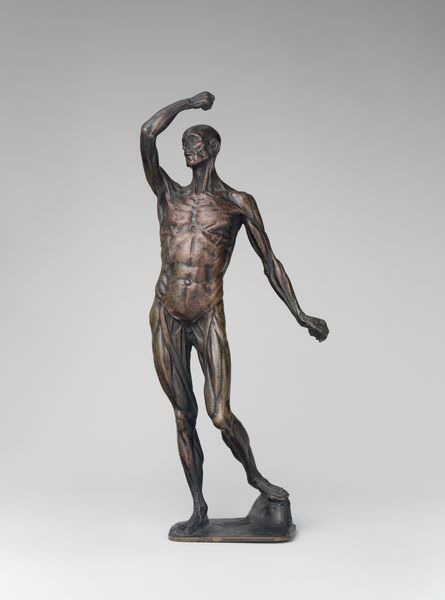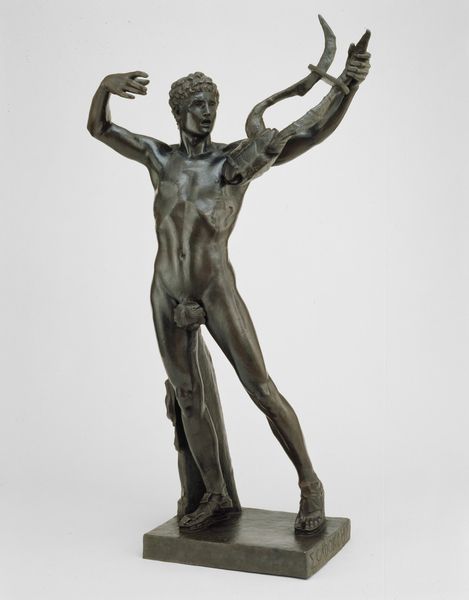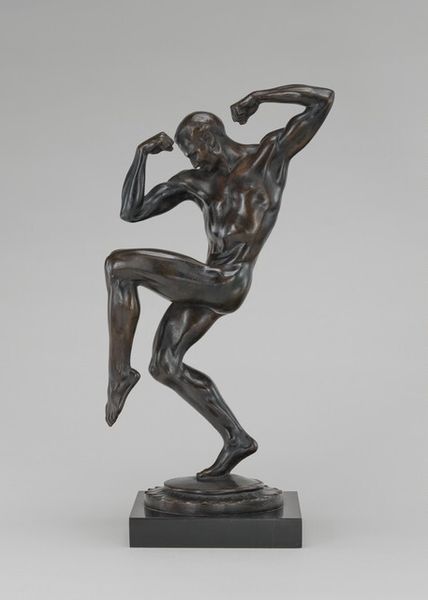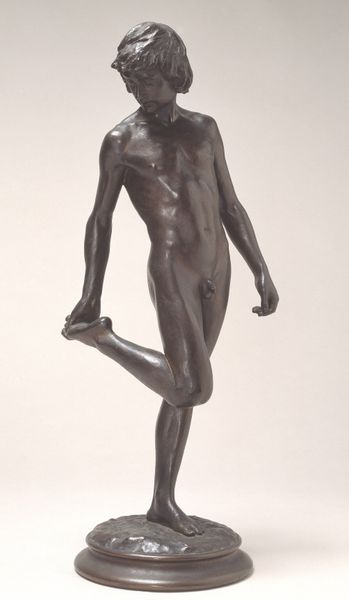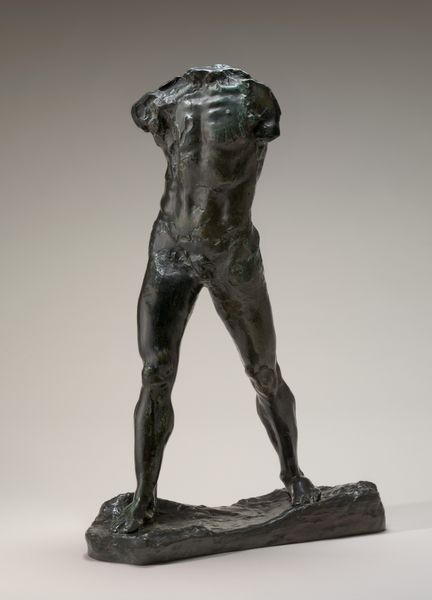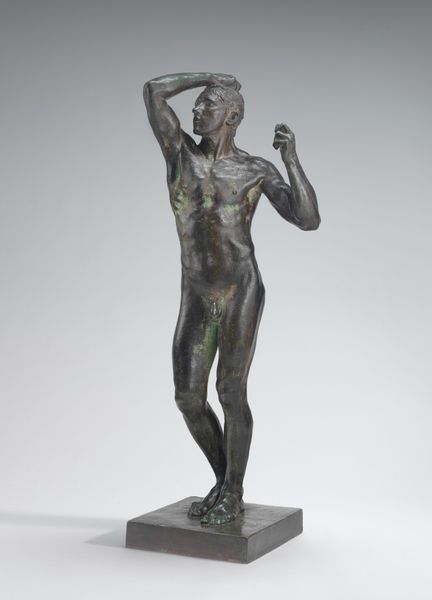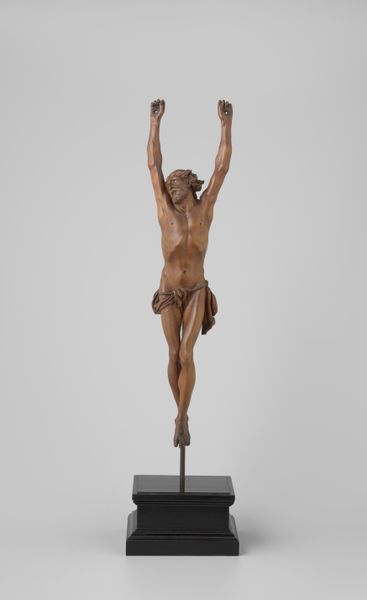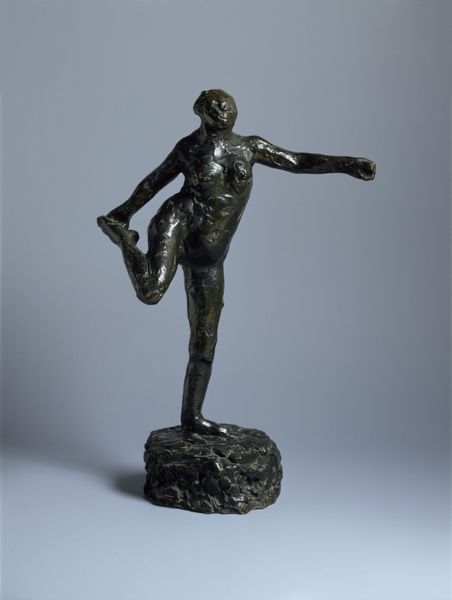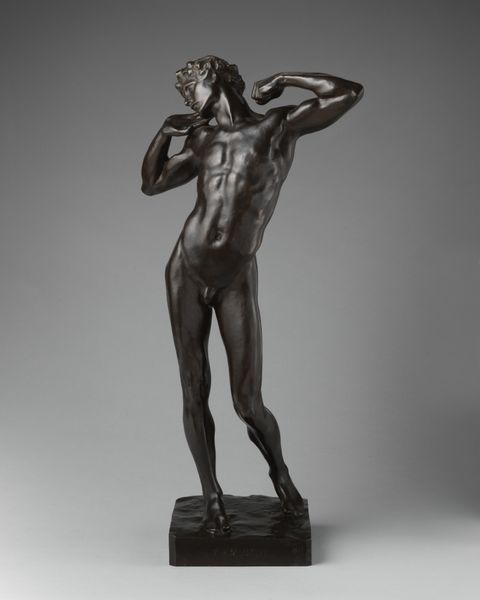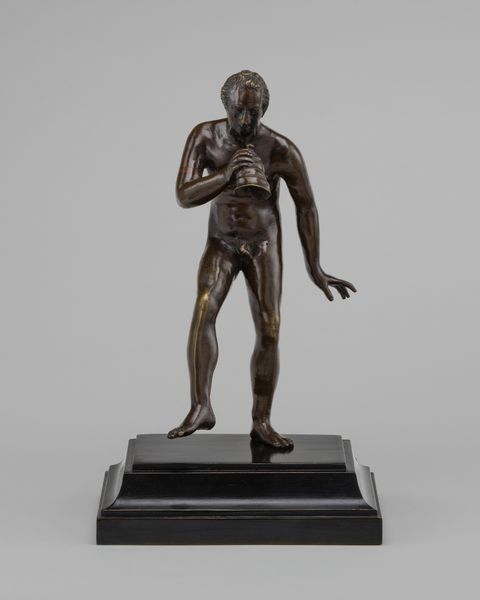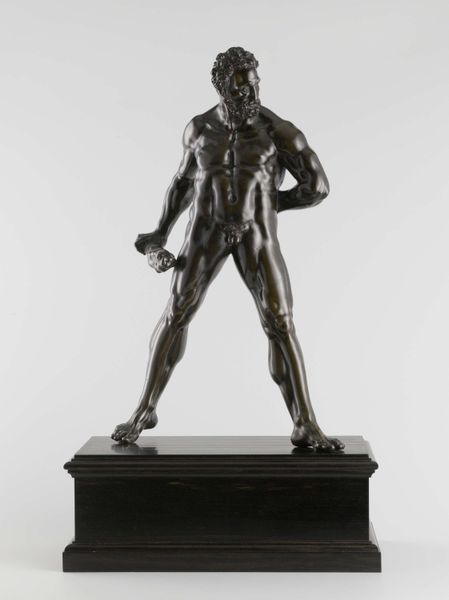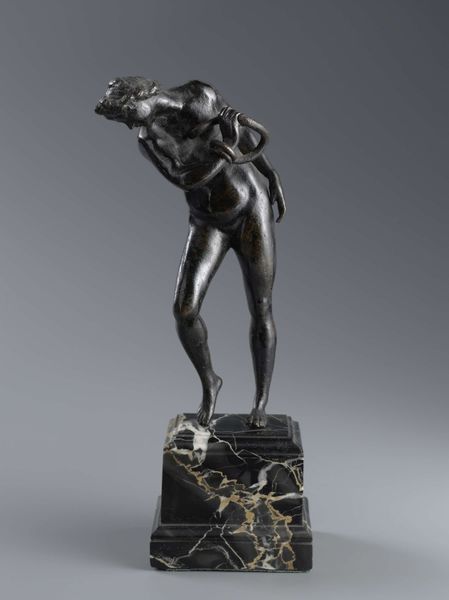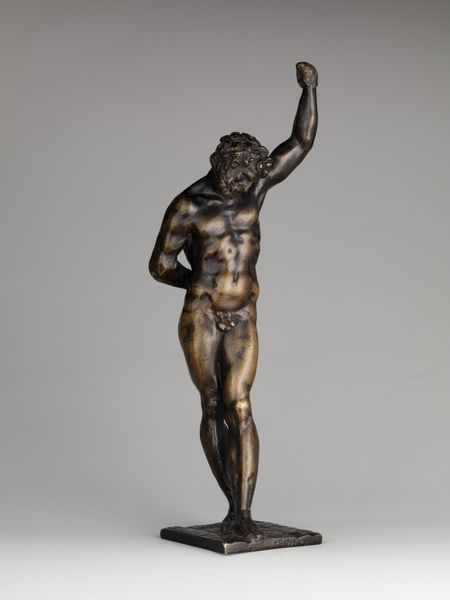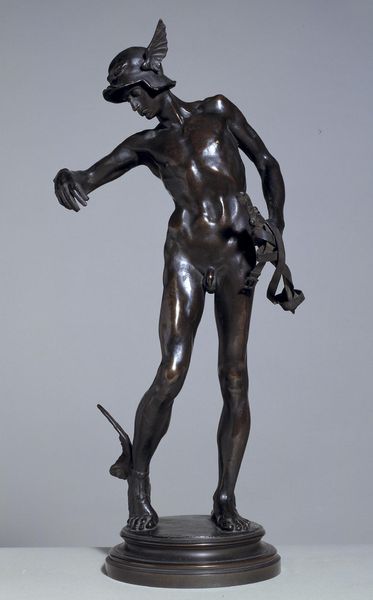
bronze, sculpture
#
sculpture
#
bronze
#
mannerism
#
figuration
#
sculpture
#
academic-art
#
nude
Dimensions: 13 3/4 x 8 1/8 x 5 7/8 in. (34.93 x 20.64 x 14.92 cm)
Copyright: Public Domain
Curator: I find this sculpture simultaneously repulsive and compelling. All those exposed muscles… what do you think? Editor: Let’s explore this bronze figure more deeply. It’s titled “Anatomical Man (Ecorché),” created around 1600 by an anonymous artist. The term "écorché" refers to a figure depicted without skin, showcasing the underlying musculature. Curator: Eew. The material reality is unavoidable. The cold, hard bronze depicting this…flayed state. The artist's labor, too, involved a process both precise and visceral, meant to reveal the inner workings of the body. It brings up questions about what we choose to display, even celebrate. Editor: Indeed. Écorché figures became incredibly popular during the Renaissance, functioning as anatomical studies within artistic academies. They were essential for understanding the human form, directly impacting the depiction of bodies in painting and sculpture for centuries, not just high art. Consider how anatomical understanding filtered down into even popular prints and medical illustrations. Curator: And the implications! Dissection as spectacle, the reduction of a human being to raw material for artistic or scientific consumption. Does this tell us anything about the public attitude toward death and the body in 17th century Europe? Editor: I'd argue yes. It signifies the evolving role of anatomical study during that period. Figures like this blurred the lines between art, science, and social acceptability. Public dissections were also happening around this time, as anatomical study advanced but with ethical issues of power, representation and social context that remain. Curator: It still feels morbid. Despite its clear function, its place within academies and collections throughout history, I find this “Anatomical Man” unsettling. It is interesting how the material communicates ideas but here it's grotesque. Editor: The écorché challenges us to confront not just the artistic process or history but the corporeal reality of what makes us human. It underscores the significance of seeing and comprehending the very fabric of existence, if somewhat grimly.
Comments
minneapolisinstituteofart almost 2 years ago
⋮
Through its active stance, this ecorché (literally, a "flayed" figure) becomes a living cadaver. The pose, drawn from classical statuary, provides an excellent opportunity to display the muscles in action, notably seen here in the differing tensions and movements of the shoulder, neck, and thigh muscles. The ecorché demonstrates the practice of anatomical representation that arose during the Renaissance from an interest in the human body and its functions. Illustrated anatomy books, and particularly Vesalius' Fabrica, published in 1543, established the activated flayed corpse as the dominant type of anatomical representation. It remained so until the Borghese Gladiator was discovered around 1610 (see the full-scale cast in this gallery). This provided a new model for the study of muscular anatomy as an intact, healthy body.
Join the conversation
Join millions of artists and users on Artera today and experience the ultimate creative platform.
